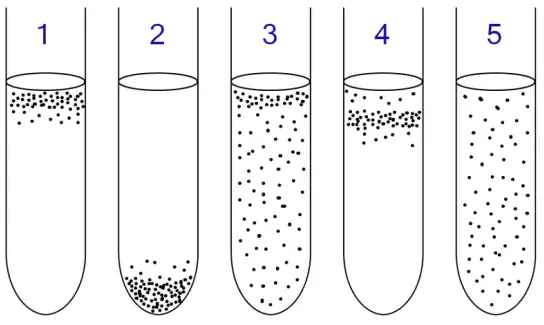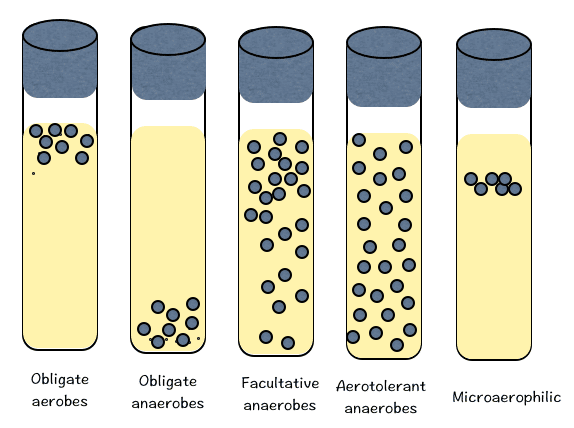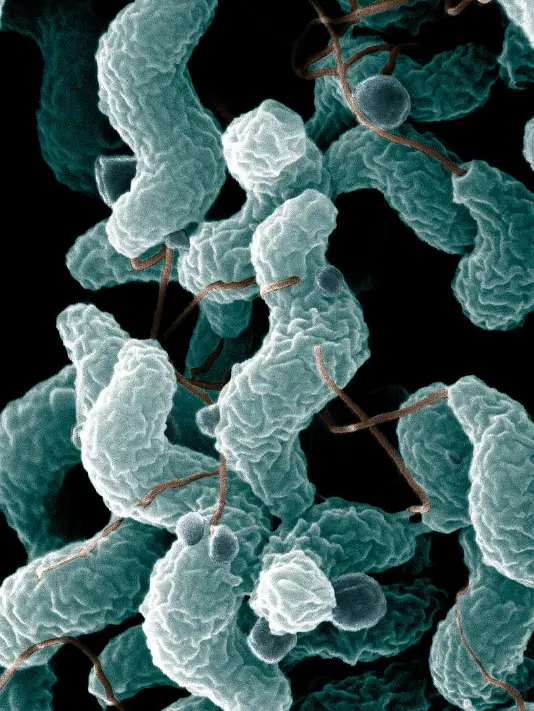Bacterial growth and survival depend heavily on specific environmental conditions, with oxygen and carbon dioxide levels playing pivotal roles. Among the various bacterial categories, microaerophilic and capnophilic bacteria are particularly interesting due to their unique atmospheric requirements. These bacteria thrive under conditions that differ significantly from those suitable for human cells, making their study crucial in various scientific and medical fields.
Microaerophilic bacteria require oxygen levels that are lower than atmospheric concentrations but cannot grow under completely anaerobic conditions. On the other hand, capnophilic bacteria thrive in environments with high carbon dioxide levels, often requiring enriched CO2 conditions to sustain their growth. This distinction in their growth environments is key to their classification and plays a critical role in their application in medical and ecological research.
Understanding the oxygen and carbon dioxide requirements of these bacteria not only helps in their accurate identification but also in their cultivation and utilization in research. These bacteria’s unique preferences impact their roles in human health, biotechnology, and the natural ecosystem, highlighting the importance of distinguishing between them for applied and theoretical purposes.

Microaerophilic Basics
Definition of Microaerophilic
Microaerophilic bacteria are a distinct category of microbes that thrive under reduced oxygen conditions. Unlike aerobic bacteria that require full atmospheric levels of oxygen, and anaerobic bacteria that cannot tolerate oxygen at all, microaerophiles need a delicate balance. They require oxygen levels that are significantly lower than the 21% present in the atmosphere, typically thriving in environments with about 5% to 10% oxygen.
Oxygen Requirements
The oxygen needs of microaerophilic bacteria are crucial for their survival and metabolic processes. These organisms have evolved several physiological and biochemical mechanisms to cope with low oxygen levels:
- Enzyme adaptation: Microaerophiles possess modified respiratory enzymes that allow them to efficiently use oxygen without being harmed by higher concentrations.
- Protective enzymes: These bacteria often produce enzymes like superoxide dismutase and catalase to mitigate oxidative stress caused by higher oxygen levels that may occasionally penetrate their preferred environments.
Common Microaerophilic Bacteria
Several clinically significant bacteria fall under the microaerophilic category, including:
- Helicobacter pylori: Known for causing stomach ulcers and potential stomach cancer.
- Campylobacter jejuni: Commonly associated with foodborne illnesses and gastrointestinal infections.
- Streptococcus mutans: Plays a role in dental caries due to its acidogenic and aciduric properties.
Capnophilic Essentials
What are Capnophiles?
Capnophilic bacteria require environments rich in carbon dioxide. Capnophiles thrive under conditions where CO2 levels are much higher than the typical atmospheric concentrations of approximately 0.04%. These bacteria are particularly interesting because their growth and survival depend on high carbon dioxide levels, usually around 5% to 10%, which is similar to the conditions used to culture cells in many laboratory settings.
Carbon Dioxide Dependency
Capnophilic bacteria’s dependency on carbon dioxide is linked to their metabolic pathways, where CO2 serves as a critical component:
- Carbon dioxide as a nutrient: Some capnophiles utilize CO2 for their carbon needs or as an aid in stabilizing their internal pH levels.
- Photosynthetic requirements: Although not typical, some capnophilic bacteria may use carbon dioxide in photosynthesis-related processes, despite being housed in non-photosynthetic categories.
Examples of Capnophilic Bacteria
Capnophiles include several types that are important both in medical and environmental contexts:
- Neisseria gonorrhoeae: This bacterium, responsible for the sexually transmitted infection gonorrhea, requires enriched CO2 conditions to grow optimally.
- Brucella species: Known for causing brucellosis, these bacteria also prefer a capnophilic environment for effective cultivation.
Key Differences
Oxygen Tolerance Comparison
The main difference between microaerophiles and capnophiles lies in their oxygen tolerance. Microaerophiles can tolerate low oxygen levels but cannot survive in completely anaerobic or high oxygen conditions. In contrast, capnophiles are less about oxygen levels and more about the presence of carbon dioxide, though they often prefer lower oxygen conditions as well.
Carbon Dioxide Levels
While microaerophiles are indifferent to carbon dioxide levels, capnophiles require high concentrations of CO2 to thrive. This difference in carbon dioxide dependency is fundamental in distinguishing between the two types in a laboratory setting.
Environmental Niches
Microaerophiles and capnophiles occupy unique environmental niches that reflect their atmospheric preferences:
- Microaerophiles are often found in niches where oxygen is partially reduced, such as in gastrointestinal tracts or dental plaque, where oxygen is limited but not absent.
- Capnophiles flourish in environments like deep soil layers, sediments under bodies of water, or animal gastrointestinal tracts where CO2 levels are naturally higher.

Growth Conditions
Culturing Microaerophiles
Cultivating microaerophilic bacteria requires a controlled environment where the oxygen levels are precisely maintained below atmospheric levels but above zero. The key steps for successful culturing include:
- Creating a Reduced Oxygen Atmosphere: This can be achieved using specialized incubators or gas packs that reduce the oxygen level to the desired concentration, typically between 5% and 10%.
- Temperature and Humidity Control: Most microaerophiles thrive at human body temperature, around 37°C, with high humidity to prevent drying out of culture mediums.
- Monitoring and Adjustment: Continuous monitoring of oxygen levels and periodic adjustments are necessary to maintain the optimal growth environment.
Culturing Capnophiles
Capnophiles require environments with elevated carbon dioxide levels. To culture these bacteria effectively, the following techniques are usually employed:
- CO2 Incubators: These specialized incubators can increase the carbon dioxide concentration to 5%-10%, mimicking the natural conditions these bacteria prefer.
- Anaerobic Jars with CO2 Packets: For smaller scale or less frequent needs, anaerobic jars with chemical packets that release carbon dioxide can be used.
- Regular Monitoring: Ensuring the stability of CO2 levels is critical, as fluctuations can adversely affect the growth of capnophiles.
Laboratory Techniques
Laboratory techniques for handling these sensitive organisms include:
- Aseptic Technique: Maintaining sterility is crucial to prevent contamination and ensure accurate results.
- Use of Selective Media: Media that selectively promote the growth of microaerophiles or capnophiles while inhibiting others are often used to isolate the desired organisms.
- Biochemical Tests: These are conducted to identify and confirm the bacterial species based on their metabolic properties.
Biological Roles
Role in Human Health
Both microaerophilic and capnophilic bacteria play significant roles in human health, often associated with various diseases:
- Microaerophiles like Helicobacter pylori are well-known for causing stomach ulcers and have been linked to stomach cancer.
- Capnophiles such as Neisseria gonorrhoeae are crucial in understanding sexually transmitted diseases, providing insights into infection mechanisms and treatment strategies.
Role in Ecosystems
In ecosystems, these bacteria contribute to the balance and functionality of their environments:
- Microaerophiles participate in the cycling of nutrients, especially in oxygen-poor habitats like deep water sediments or the gastrointestinal tracts of animals.
- Capnophiles often play a role in decomposing organic material in environments where CO2 levels are naturally elevated, aiding in nutrient recycling.
Industrial and Medical Relevance
Use in Biotechnology
Microaerophilic and capnophilic bacteria have applications in biotechnology due to their unique metabolic pathways:
- Bioremediation: Some species can degrade pollutants under specific atmospheric conditions, useful in cleaning up contaminated sites.
- Fermentation Processes: Certain microaerophiles are used in the fermentation of foods and beverages, where controlled oxygen levels are necessary for desired outcomes.
Importance in Clinical Diagnostics
In clinical diagnostics, the identification and cultivation of these bacteria are crucial:
- Disease Diagnosis: Accurate detection of bacteria like Helicobacter pylori or Neisseria gonorrhoeae is essential for diagnosing and treating infections effectively.
- Antibiotic Susceptibility Testing: Culturing these organisms is vital for testing their susceptibility to various antibiotics, guiding treatment decisions in clinical settings.
Frequently Asked Questions
What are microaerophilic bacteria?
Microaerophilic bacteria are those that require oxygen levels lower than what is found in the earth’s atmosphere but cannot survive in entirely oxygen-free environments. Their growth optimum typically ranges from 5% to 10% oxygen, which is significantly lower than the 21% found in ambient air.
How do capnophilic bacteria grow?
Capnophilic bacteria thrive in environments with a high concentration of carbon dioxide, usually between 5% to 10%, much higher than the atmospheric CO2 levels. These conditions are essential for their optimal growth and reproduction, often necessitating special cultivation methods in laboratory settings.
Why is distinguishing between microaerophilic and capnophilic bacteria important?
Distinguishing between microaerophilic and capnophilic bacteria is crucial for clinical diagnostics and microbiological research. It helps in accurately identifying the causative agents of various infections and in understanding their growth mechanisms, which are vital for effective treatment and prevention strategies.
What roles do these bacteria play in ecosystems?
Microaerophilic and capnophilic bacteria play significant roles in nutrient cycling and maintaining ecological balance. They are involved in processes like nitrogen fixation and decomposition, crucial for soil health and plant growth, impacting broader ecological systems.
Conclusion
The distinct environmental preferences of microaerophilic and capnophilic bacteria underline the complexity of bacterial life and its adaptations. These differences not only provide a basis for scientific classification but also influence many practical aspects of microbial handling and application in industries and medicine. Understanding these nuances enhances our capability to harness their properties for beneficial uses.
In conclusion, the study of these bacteria offers valuable insights into microbial ecology and pathogenesis. By exploring the specific requirements and roles of microaerophilic and capnophilic bacteria, researchers can develop more targeted approaches in both environmental management and medical treatment, ensuring these microscopic organisms significantly impact our world.

